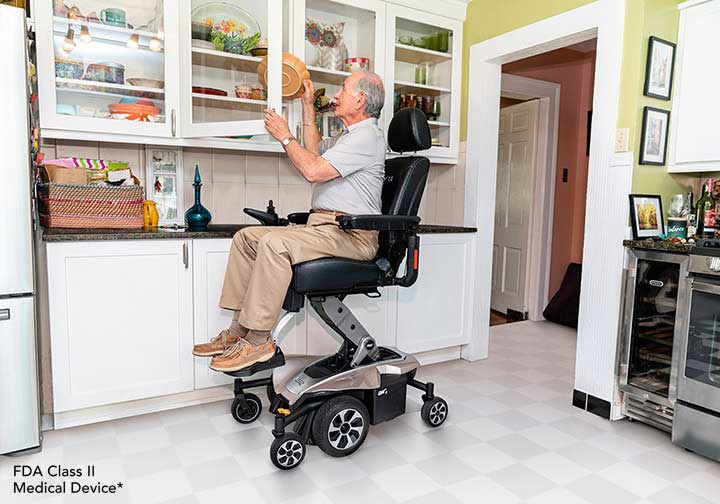As we age, most of use want to remain in the comfort of our own homes, even if we need some assistance. In fact, 82% of seniors want to remain in their homes even after they need assistance. Only 9% want to be in a nursing care facility and only a mere 4% wish to live with relatives. With the majority of the aging wanting to remain at home, there are several challenges to consider. Falls are currently the leading cause of injury- related emergency room visits in the United States and the main cause of in home accidents in adults over the age of 65. In fact, 75% of in home accidents in this age group are attributed to falls. Thankfully, many of these falls in the home can be prevented and there are great options for equipment and technology that can help the senior population remain safely in the home.
Traditionally, the aging population were taken in by family members or placed in a skilled nursing facility when they started to need assistance in the home. That is no longer the case. There are many options when it comes to the placement of seniors after assistance is needed. These individuals can remain safely in their current home with the aid of home medical equipment, home health care, and assistive technology.
For seniors wishing to remain in the home as they age, there are several factors to consider that may impact the senior’s physical health and safety. Falls can occur anywhere in the home, but are more common in the bathroom, the bedroom, around clutter, and around stairs. An item as simple as a loose rug can be a factor in whether someone remains standing upright. For seniors who are experiencing issues with memory, medications and meal preparation can be a concern. Luckily, for all of these concerns, there are solutions.
The bathroom no longer has to be a place where falls occur. Assistive devices such as grab bars, shower chairs, commodes, raised toilet seats can be placed in the bathroom to assist the senior in bathing and toileting without fear of falling. In case that fall does occur and the senior resides in the home alone, emergency response buttons are very useful tools to ensure that help is provided when a senior has fallen. Concerns with the bedroom can also be mitigated with right home medical equipment. A senior who has issues getting in and out of bed, or even falling from the bed can benefit from a hospital bed with railing. The hospital bed can be adjusted down to accommodate the senior getting into bed without issue or injury. Furthermore, as stairways become difficult or even dangerous to navigate, a stairlift may be a great product to consider. This can assist the senior in traveling safely to another story of the home without injury or issue. Additionally, ramps and railing can be installed both inside and outside the home to to assist with safe and secure access to multiple levels of their environment.
The rapid advances in smart home technology are enabling connected aging in place to become a reality for a wide spectrum of seniors today. Creating a digital ecosystem built around technology that is commercially available such as Alexa or OK Google can be a welcome opportunity for adult children or other caregivers to not only stay connected but also remotely monitor activity and safety within the home environment.
With 82% of seniors wanting to remain in the home even after they need assistance, it is not difficult to understand why there are so many great technologies and equipment available to help them do so. Aging in place can be a wonderful alternative to being placed in any type of institutionalized care, but regardless there are challenges that need to be considered and obstacles that may need to be overcome to ensure you are able to make home where your health is.

